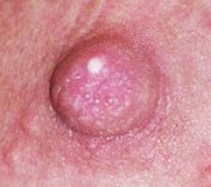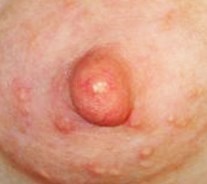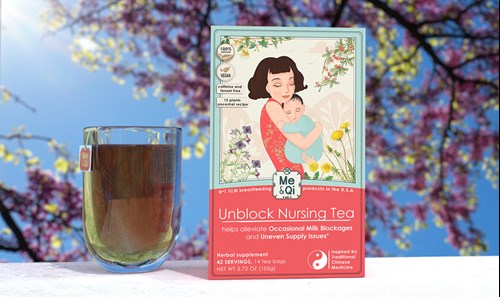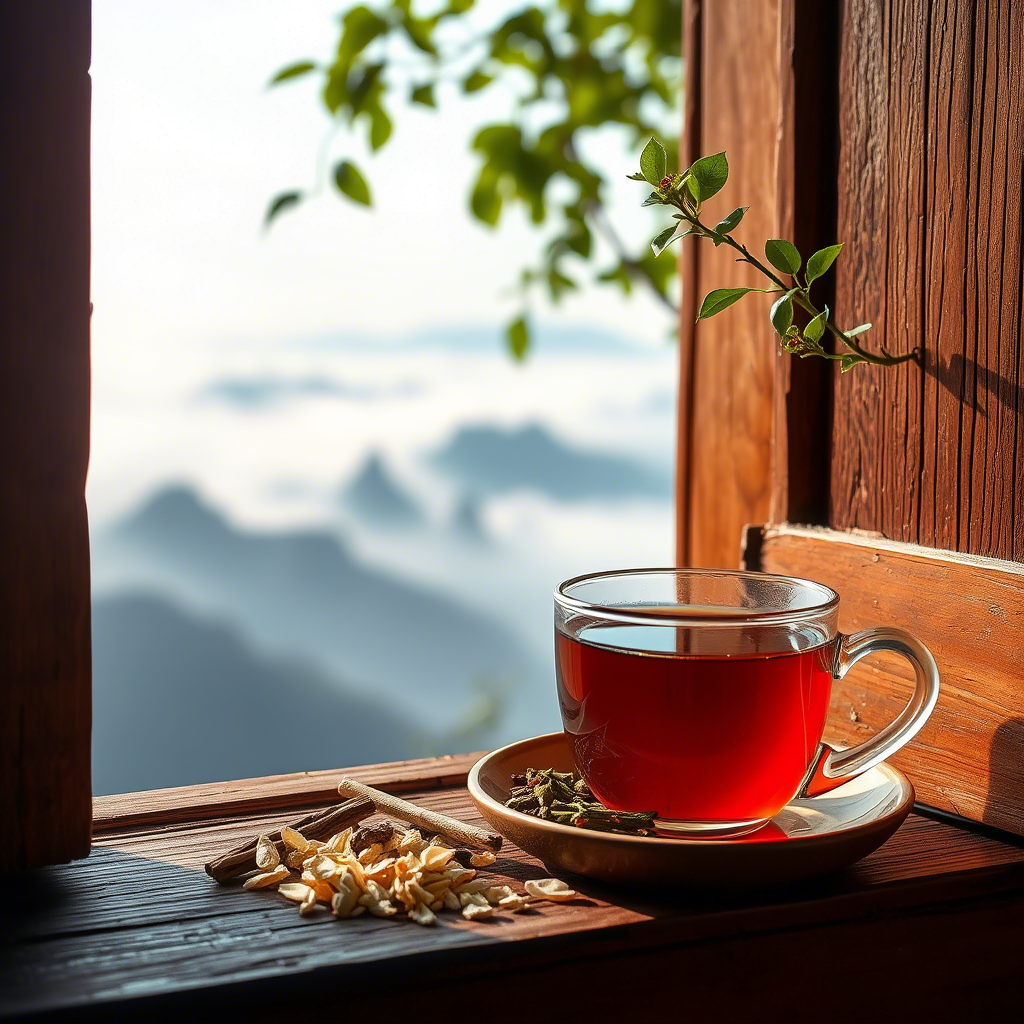Contents
- Image Of Milk Blebs
- Milk Bleb vs Milk Blister
- What Causes A Milk Bleb On Nipple, Areola, Or Breast?
- Prevention Of Recurring Milk Blebs, At The Same Spot
- Will A Milk Bleb Go Away On Its Own?
- Can I Pop A Milk Bleb?
- What Happens When A Bleb Pops?
- How To Ease Milk Bleb Pain At Home?
- When Should I Be Worried About Milk Blebs?
Image Of Milk Blebs
- Milk bleb on nipple

A milk bleb, also known as a milk blister, is a condition where a piece of skin or a small amount of hardened breast milk blocks the nipple pore. This creates a blocked duct at the nipple, leading to a buildup of milk behind it. Milk blebs are frequently observed in breastfeeding mothers.
As shown in image, a white dot is on top of the nipple, surrounded by red skin rash.
- Milk bleb on areola
The areola is the circular, dark-colored area of skin surrounding the nipple on the breast. Milk blebs can sometimes develop on the areola, just like they can on the nipple itself. The size of the white spot is usually smaller than the ones on nipple.

- Milk bleb on breast
A milk bleb on the breast resembles small bumps that may form on the areola and nipple. These bumps are typically white or yellowish in hue. As demonstrated in the image, transparent milk blebs can be found on the breast tissue and atop the nipple opening.
Milk Bleb vs Milk Blister
Milk blebs and milk blisters are common breastfeeding issues caused by clogged ducts, friction, or infection, often used interchangeably due to personal preferences. Both create small, raised bumps on the nipple.
The only major difference between milk blister and milk bleb is that milk blebs remain flat and uneven, and can be white, light yellow or pink in color. On the other hand, milk blisters contain visible trapped fluid and resemble regular blisters and can be transparent, dark, red, or white in color.
What Causes A Milk Bleb On Nipple, Areola, Or Breast?
Milk blebs are common with breastfeeding. It often occurs in the beginning stages of breastfeeding, such as the first three months, as the body needs time to adapt to this new habit. Here are some possible causes of milk blebs:
1. Feeding issues
- Poor latch
If your baby isn't latching properly, milk may not be efficiently drained from your breast. The latch refers to how your baby sucks on your breast, and this can lead to milk backing up and plugging your milk or nipple ducts.
- Improperly fitting breast pump
Wearing a breast flange or shield that's too small can create friction on your nipple and cause milk blebs. A flange or shield is the plastic attachment that covers your breast when you're pumping breast milk.
- Oversupply and clogged milk duct
When there is an oversupply of milk and inadequate drainage, the ducts can become clogged and milk blebs form.
This mostly occurs when feedings are missed or postponed. Such situations can arise when the baby sleeps for extended durations, the mother returns to work after maternity leave and breastfeeds or pumps less frequently, or the baby is going through teething and struggles to nurse effectively.
2. Stress on breast tissue
- Mechanical Trauma To the Nipple
Researchers think that blebs are most likely caused by an inflammatory response to mechanical damage to the breast (suboptimal latch and positioning). When an inflamed wound heals, a layer of skin may grow over it and block a nipple pore. This lets milk build up behind the pore, appearing as a milk blister.
- Tight-fitting bras or breast pressure
Bras with underwire, purse straps, or sleeping on your stomach can put pressure on your breasts and nipples. This pressure can contribute to clogged milk ducts and milk blebs.
3. Skin conditions
- Eczema
Certain skin conditions, such as eczema can cause milk blebs to form on the nipple. These conditions can cause the skin to become dry, flaky, and irritated.
- Cysts
Milk blebs could also appear in the form of a small pressure cyst formed at the end of a milk duct due to milk seeping into elastic tissue.
4. Toxic Heat
Toxic Heat is a concept in Traditional Chinese Medicine (TCM) that refers to a condition characterized by an excess of Heat in the body. According to TCM, the word Toxic indicates any bacteria or stress and Heat refers to inflammation.
So, any stress can lead to the accumulation of Toxic Heat in the breast which can show symptoms of redness, pain, blebs or blisters. This Toxic Heat can result from a variety of factors, including poor diet, emotional stress, and physical imbalances.
5. Inadequate nipple care
Inadequate nipple care can lead to the formation of milk blebs by causing damage or irritation to the nipple. It include improper latch, wearing ill-fitting bras or clothing, using harsh soaps or lotions on the breasts, and not properly treating cracked or sore nipples.
Prevention Of Recurring Milk Blebs, At The Same Spot
Preventing recurring milk blebs can be challenging, especially these prolonged ones at the same spot.
First of all, it is critical to address the underlying causes, such as emotional stress or heavy diet, as they contribute to the Toxic Heat accumulation in the breasts, according to the Traditional Chinse Medicine.
Proper latch during breastfeeding is also crucial to prevent nipple damage and subsequent milk blebs. Keeping the breast clean and dry can reduce bacterial growth and the risk of infection. Nipple ointment, such as lanolin cream or coconut oil, can soothe sore nipples and prevent damage that can lead to milk blebs. Wearing loose, comfortable clothing is important to avoid tightness and pressure on the breasts, which can lead to milk duct blockages.
More importantly, continuing to breastfeed or pump frequently on the affected breast can prevent milk from building up and causing additional milk blebs.
For further details read our article.
Will A Milk Bleb Go Away On Its Own?
Milk blebs are a common issue for breastfeeding mothers, and in most cases, they typically clear up within a day or two. However, some individuals may experience pain and discomfort from a bleb for several days or even weeks until the skin peels off the pore.
This can be especially frustrating and uncomfortable for new mothers who are already dealing with the physical and emotional demands of caring for a newborn.
Can I Pop A Milk Bleb?
If you're experiencing discomfort due to a milk bleb, there are several methods you can try before considering popping. Applying warm or cold compresses, massage, and adjusting breastfeeding techniques can often provide relief. Check out this detailed article on how to prevent and treat milk blebs.
However, if these methods don't work, popping the bleb can be an option. Visiting a doctor for a bleb or blister may be time-consuming and require significant effort, so popping at home can be convenient. Just be sure to sanitize the equipment properly and proceed with caution. To learn how to pop a milk bleb by yourself, refer to this article.
What Happens When A Bleb Pops?
When a milk bleb pops, it can cause a release of milk or a mixture of milk and pus immediately. This can also cause temporary pain and discomfort in the affected area.
In fact, in some cases, the skin surrounding the milk bleb may also become inflamed, leading to further pain.
How To Ease Milk Bleb Pain At Home?
Milk bleb can be painful and uncomfortable for breastfeeding mothers. Here are some tips to ease milk bleb pain at home:
Applying a cold compress, such as an ice pack or frozen cabbage leaves, can help to reduce inflammation and numb the pain receptors in the area. This can provide temporary relief from the pain and discomfort associated with a bleb.
On the other hand, soaking your breast in warm water for a few minutes before breastfeeding or pumping can help soften the skin around the milk bleb and make it easier to open.
Apply a nipple cream to the affected area after breastfeeding or pumping. This can help soothe the skin and prevent further irritation.

If above methods do not provide relief, you can take ibuprofen to relieve pain. It is safe to use during breast feeding.
Finally, you can use Unblock Nursing Tea. It is a combination of cooling herbs like Licorice, Goji berry, Dandelion, and Honeysuckle flowers that have antibacterial and anti-inflammatory properties.
These properties help to combat bacterial infections and clear the accumulation of Toxin Heat. Unblock Nursing Tea works by affecting the Stomach Channel which is connected to the breasts, making it effective in eliminating associated heat.
When Should I Be Worried About Milk Blebs?
If you are experiencing milk blebs or blisters while breastfeeding and they are causing severe pain, it's important to address the issue. While some discomfort is normal during breastfeeding, persistent pain should not be ignored.
If home remedies do not provide relief, it's advisable to contact your doctor to prevent the issue from progressing into a blockage in the milk duct or mastitis. Mastitis can cause flu-like symptoms and a decrease in milk production if left untreated. Remember, seeking medical attention can help you avoid serious complications and enjoy the benefits of breastfeeding.

